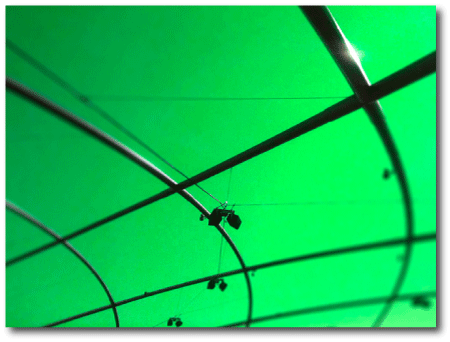Hey! Did you see the New York Times article about the discovery of a Jupiter-like planet orbiting Barnard’s Star?
The subtly out-of-date fonts are really the only indication that the above article, which was printed on April 19th, 1963, is nearly a half century old. Certainly, the blandly uninformative expert commentary and the worn-smooth assertion that the new finding adds support to the conviction of astronomers that a great many solar systems exist, some of them possibly supporting life, are both still fully serviceable.
The erstwhile planet(s) orbiting Barnard’s star were the fruit of thousands of astrometric measurements of photographic plates taken from 1938 through 1962 by Dr. Peter van de Kamp and his students from Swarthmore College’s Sproul Observatory. During the 1960s, the existence of van de Kamp’s planets were generally accepted by the astronomical community, and they only began to drift out favor during the 1970s. As explained in this interesting historical review of exoplanet detection, it’s now clear that the apparent astrometric motions of Barnard’s Star over the years can be correlated with telescope adjustments. Modern radial velocity measurements from UVES at the VLT and from the HET telescope show quite definitively that van de Kamp’s planets don’t exist:

Indeed, there must now be enough radial velocity observations of Barnard’s star to put some very interesting limits on any planets that might be lurking in the system… Given that the star is so bright (for a red dwarf) with V=9.5, highly charismatic, and visible from La Silla, I think it’s safe to say that for orbital periods of less than ~100 days, the largest planets that could be hiding there have masses roughly twice that of Earth.
Broadly speaking, the non-hydrogen/helium mass of a planetary system is ~0.02*0.016*Mstar*(10**[Fe/H]). We therefore don’t expect to find bruisers of planets orbiting Barnard’s Star, which has only ~14% of the Sun’s mass, and has a metallicity of order 10-30% that of the Sun. Given what we now know about the galactic planetary census, an educated guess is that Barnard’s star harbors several roughly co-planar planets, none larger than 1.5 Earth masses, with orbital periods less than 100 days. In fact, I think there’s an even chance that within the next four years, we could be reading about just such a system in the New York Times.



Well there is at least the example of the KOI-961 system with 3 sub-Earth planets orbiting a star which is a rough analogue to Barnard’s Star.
I seem to also recall there were claims made for astrometric detection of planets around Lalande 21185 back in the 1990s, how have those held up?
Pingback: Was the first exoplanet discovered…half a century ago? « Exoplanets in Plain Language
This certainly did go down in history and in my case it certainly inspired to go on the road to Astronomy. I remember popular Astronomy books from my childhood era (in the 70’s) featuring an artist’s impression of a dimly-lit planetary system around Barnard’s star – illuminated at 1/2500th the Solar insolation. Another system that was mentioned at the time was 61 Cygni (a binary), with another crude artist’s impression. A quick look through some articles indicates Van der Kamp’s work again. Apparently, nothing has been found around the 61 Cygni stars to date.